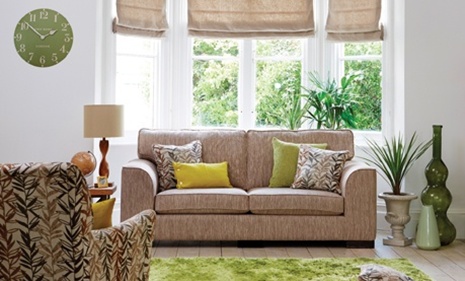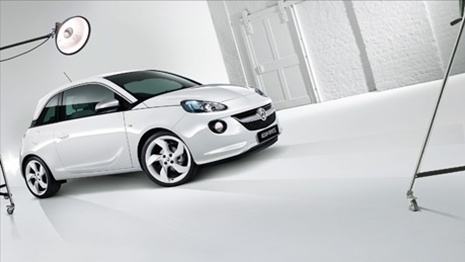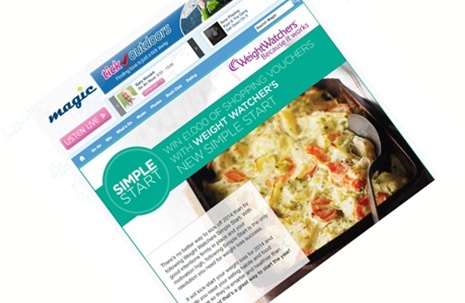Should big brands put their money into local media?
Can the launch of new local TV stations like London Live increase the lure for big brands looking to reach audiences on a local level?
Above: London Live starts broadcasting next week but local TV has not succeeded in the UK previously, and with ad revenue down at both regional newspapers and radio stations, it is a difficult landscape to navigate. But as brands look to reach consumers on a more personal level, they are keeping a close eye on developments
Local media may be set for a boost as a host of new local TV stations, such as London Live which starts broadcasting on Monday (31 March), springs up as a result of new licences awarded by broadcast regulator Ofcom. Could their arrival move regional TV and local media up the agenda of brands looking to increase relevance and connect with consumers on a more personal level, or are the channels set to languish unwatched?
Tesco chief marketing officer Matt Atkinson suggests there is advertiser demand for local media. He says: “We are starting to regionalise our local marketing effort to reflect variations in our store footprint and make-up, which we do consistently across the country.”
The supermarket rejuvenated its Watford store last year with the addition of a Giraffe restaurant, Harris + Hoole coffee shop and a new clothing offer. Atkinson says it is imperative to highlight “the local variety that exists in the store, through local media, local marketing and tailored activity, which works well”.
But local media owners are struggling. Despite market consolidation and measures to strengthen their digital offerings, audiences of local newspapers and radio stations are in decline.
Ad spend at regional papers has dropped by nearly 60 per cent since 2007 and ad revenue across all radio stations has fallen by 14 per cent during the same time, according to research by Group M.
Local media is often overshadowed in advertisers’ eyes by the lure of national media, because big brands want to reach large audiences.
And with new technological developments such as geo-targeting on mobile and Sky’s AdSmart, which can serve ads to different households watching the same programmes, local media’s unique selling point is being further diminished.
Despite Ofcom’s 25 newly awarded local commercial TV licences, it is an area that in the past has been unsuccessful in the UK due to poor content quality and channels that were difficult to find on set-top boxes, resulting in small audiences and minimal advertising.
We don’t know yet how consumers will interact with local TV channels. At this stage we would anticipate more regional targeting opportunities
“We have very strong regional channels in this country but have never been able to crack local TV,” says Nigel Dacre, chair of the newly-formed Local TV Network and a backer of Nottingham station Notts TV.
Dacre insists that the Government is determined to give local broadcasters a fighting chance by bringing in measures to kick-start the sector, a move first outlined in 2011 by the culture secretary at the time Jeremy Hunt.
About £40m has been pumped into the local broadcast initiative from funds left over after the UK’s TV signal was switched to digital. ‘Minutage’ rules, which restrict the proportion of time given to ads, have also been relaxed, meaning there are greater opportunities for ad-funded programming. The only stipulation Ofcom makes is that during local programming, which each channel must run for a set number of hours each day, advertising minutage is restricted to 12 minutes an hour. Finally, and most importantly from a consumer awareness perspective, each new TV channel will be positioned at number 8 on the Freeview electronic programme guide (EPG), far higher than any local TV channel previously.
The biggest of the new channels is London Live[1] , which will also be available on Sky and Virgin Media, giving it a potential reach of 4 million households.
London Live, owned by the same company as the London Evening Standard, will be the third local TV brand to go on air. Publisher Archant’s Mustard TV started broadcasting in Norwich on 24 March, and Grimsby’s local community organisation Estuary TV launched last November.
Local landscape changing
“The local landscape is set to change in the coming months as a result,” says Birds Eye UK & Ireland marketing director Margaret Jobling[2] . She adds that local media of all kinds is important for the food brand to drive relevance and engagement; it spends 10 to 15 per cent of its marketing budget at a regional level.
“It will certainly open up opportunities for brands. There is now a watching brief around how it plays out in the marketplace.”
Quality content is critical to the strategy at London Live, says Andrew Mullins[3] , chief executive of the channel and managing director of the Evening Standard, The Independent and i newspapers.

Local TV could give brands such as Furniture Village and Vauxhall (below), which already use regional content in local media, another avenue to explore
In addition to hosting news and current affairs coverage each day and acquiring the rights to existing London-based shows such as Misfits and Peep Show, first broadcast on Channel 4, it is also commissioning new content, including documentary Drag Queens of London and stand-up show Funny Rotten Scoundrels, which is hosted by presenter and DJ Alex Zane.
London Live has also commissioned Samuell Benta, creator of the web series All About the McKenzies, to produce a new series for the channel.
“A lot of our commissioning strategy has been about finding fresh talent. Benta already has half a million people following him on the web so we intend to bring him and his audience with us,” says Mullins. He believes this approach will help the station grow its audience faster.
Jobling agrees that all local media organisations – not just TV – will live or die by the content they produce.
“People watch what they want to watch, or read what they want to read. So content has to have enough appeal and relevance to keep them engaged because local media brands are going up against big content developers and programmers whose job it is to schedule high- interest material,” she says.
As part of the Government’s programme, £15m of funding has been distributed to the local channels specifically for content.
“Each new TV channel that launches gets £150,000 during year one in return for content that it delivers to the local BBC service. It’s not a large sum of money in TV terms but the Government hopes it will make a difference, particularly in the early months when building up the revenue base,” says Local TV Network’s Dacre.
Watch for developments
For Vauxhall Motors it will be a case of keeping a close eye on developments. Nicola Jenkins, head of retail marketing, says: “We don’t yet know how consumers will interact with local TV channels and therefore the type of programming that will resonate with them. But at this stage we anticipate more regional targeting opportunities.”
At present, the car marque uses press, radio, digital channels, outdoor and direct mail at a local level. “We do not use TV locally; we cover this with our brand advertising nationally,” she adds.

The size and business model of the new local TV stations does vary. Larger stations such as London Live and STV in Glasgow and Edinburgh will focus on attracting big national brands while others, such as Estuary TV and Made in Bristol, will lean towards local support initially. As a result, Dacre warns brands not to make hasty generalisations about local TV opportunities.
To make the buying process simpler for national brands across smaller channels, the Local TV Network has appointed sales house Axiom Media to sell across “most” of them, he claims. “There will be a small number of stations that choose to sell ads themselves, or those that will only take local ads, but the fact we have come together to try to sell ads nationally is something that many advertisers believe will make a difference,” says Dacre.
While Mullins says London Live will collaborate with the other licence holders and share information where possible, it will not be looking to sell its ad space as part of a network in this way.
“We will sell all our own advertising. We’re a media company with existing clients and relationships and that’s where we see our advantage. It also means we can tie up campaigns across different touchpoints throughout the day,” he says. He believes using the assets of the wider company will attract new advertisers, something the Evening Standard has achieved since becoming free, enabling it to treble ad revenues.
London Live has signed hair styling brand L’Oréal Studio Line as its launch sponsor, a brand that Mullins says was not a big advertiser across the Evening Standard, The Independent or i previously.
“Big advertisers with big budgets generally have a lot of video advertising content that they want to distribute and if you’re classic print-based media with digital, you can’t really help distribute their video communications that well. It’s attractive but it’s not the most attractive,” he admits.
The ability for brands to create bespoke ad-funded programming opens up more opportunities for advertisers looking to reach audiences through local TV.
Birds Eye’s Jobling says: “Ad-funded programming has always been tricky because you’ve got two agendas [commercial and editorial] trying to find common ground. But it’s an interesting model, particularly as brands try to find their way into more content.
The balancing act of reach versus return at local level will be one to watch. If you are a brand with a regional bias, it would make sense
“The balancing act of reach versus return at a local level will be one to watch. If you have high regional bias as a brand, it would make sense, or if you’re trying to drum up interest in a particular region.”
Local nuances
Brands with good data on the geographical spread of their consumers could carry out this kind of targeting. Sainsbury’s, for example, has set out to identify local nuances among shoppers to make its marketing more specific to different regions, according to Helen Hunter, director of customer data and relationships.
She says: “This goes beyond above-the-line to target our campaigns through specific channels. We also use Nectar data to make our campaigns relevant at a local level and showcase any popular, locally sourced products.”
Consumers’ trust in local news is a plus point for brands that choose to advertise in local media.
“It comes back to community,” says Birds Eye’s Jobling. “The closer you are to home, the higher the engagement.”
The Newspaper Society’s Consumer Catalyst study of more than 2,000 readers of local press and websites finds that 52 per cent of people believe their local newspapers are the most trusted source of information, compared to 4 per cent for national newspapers.
In addition, half of those surveyed believe the economy in their local area is doing well compared to 32 per cent for the whole country.
Meanwhile, 85 per cent say they spend more than half their time within five miles of their home, and 70 per cent spend more than half their money there.

Weight Watchers used regional ambassadors in local campaigns, doubling enrolment figures
However, Vauxhall’s Jenkins is unconvinced that local media has the ability to keep up with the shift in people’s media consumption.
“Local media embraces change in consumer behaviour at a much slower pace than national media, so the key for local publishers is to continue to keep on top of changing consumer habits,” she says. “If they create strong cross-platform brands, it will produce new opportunities in the future.”
While the Evening Standard and Archant have both gone down the TV route, fellow newspaper publisher Johnston Press, which owns 209 local news titles across the country, has opted for a digital solution.
Chief marketing officer Lucy Sinclair says: “We are seeing enormous growth in video consumption and video advertising but we don’t believe that hyper-local TV channels are the answer.
“We have just launched a video brand called News Eye, which is a networked, hyper-local video product that brands can purchase as a single, targeted buy, but it’s distributed across our news brand websites. So instead of being a separate channel we have developed it to be more ‘digitally native’.”
Over the past 18 months, Johnston Press has relaunched all its titles in order to consolidate advertising so that national brands can reach local audiences more easily across its portfolio. Lottery brand Lotto, for example, ran a campaign across the network, which was hyper-localised through news stories in areas where there are big Lotto-funded projects.
More than 70 localised articles were published over the six-week campaign during which time brand recognition increased from 83 to 86 per cent and the activity encouraged 30 per cent of respondents to take action and play.
Adapt locally
Radio is also being used by brands to fine-tune messages within local markets. Mike Gordon, managing director of commercial across Global Radio’s network of stations, which include Heart, Capital and Classic FM, says it works with brands to deliver a single overarching creative strategy that can be adapted to local markets.
Tissue brand Kleenex, for example, linked cold and flu and hay fever messaging to its sponsorship of the weather on Capital based on the conditions outside. Similarly, skincare brand Nivea ran as un cream campaign on Heart, which it activated on a regional level based on the weather.
“On average, radio advertisers get their money back 7.7 times over – £7.70 for every £1 spent – although some categories show exceptional performance, notably automotive and retailer brands, as well as impulse products. This makes radio the medium with the second-highest return on investment behind TV, outperforming press, outdoor and online,” he says, referencing the Radio Advertising Bureau’s research ‘Radio: The ROI Multiplier’.
Also persuaded by the power of radio, diet brand Weight Watchers ran a campaign across Bauer’s portfolio of stations in key cities to get more people to sign up to its local meetings.
In each region it recruited 13 listener ‘ambassadors’ with regional dialects and followed their progress through weekly features and a blog, which, combined with presenter testimonials and other activity, enabled the brand to double enrolments over a two-month period.
Derek Hewitt, Bauer Media’s radio sales director, says: “Brands can hang off one idea but execute it differently in each area. Rather than having listeners across all stations competing for one big prize, for example, we have found that if brands offer lots of smaller prizes, people think they have more of a chance of winning, so you get better participation.”
The key question for marketers is whether advertising in local media will allow them to buy and engage with the right audience at the right price.
For those whose first concern is to reach consumers nationwide, the shake-up instigated by new local TV channels will not be a game changer. But there will be new opportunities for brands to reach consumers at a regional level, although it is still early days. As Birds Eye’s Jobling puts it: “It all depends on how it rolls out, the content and the viewership. While it might allow you to tailor content very quickly by region, it will be interesting to see how the cost versus value plays through.”
For now, it seems many brands are content to sit and watch. The ultimate test of the new local media landscape will be how many viewers can be persuaded to do the same.
Retailer viewpoint
Charlie Harrison
Director of marketing Furniture Village
Being perceived as part of the local community is always going to be an important aspect of Furniture Village’s media strategy.
The local media landscape, however, is changing and with the flexibility of localised online search engines and regionalised TV, our spend is placed in the most significant and cost effective media. We are always looking for inventive ways to make our presence felt and one of the options we have explored involves funding relevant programming.
Over the past two years, local papers have decreased their circulation significantly and the consumer demand generated from these titles has diminished, which means that we need to be more tactical in our approach and select the most effective local channels.
Regional activity will play a significant part in localised campaigns and will help us build a stronger relationship with local media in the regions where Furniture Village has stores. Having presence in local media is also important when opening new branches.
Local media in numbers
25
local TV licences awarded 2 TV stations currently live
1,100
local newspapers
1,700
local newspaper websites
292
FM/AM local radio licences
Q&A

Andrew Mullins
Chief executive
London Live
Marketing Week (MW): How are you hoping to change people’s preconceived views of local TV?
Andrew Mullins (AM): People initially thought we were going to be doing Alan Partridge-style TV or video radio because the horrible ‘local’ thing still hangs over the sector. People think it’s going to be low quality, low engagement and low budget.
The first thing we did was establish the fact that we are a proper entertainment channel with quality acquired content, new commissioned content that hits the button for our target audience, and a robust news and current affairs offering.
MW: Viewers are beginning to switch off from linear TV so is it not a risky time to launch a new channel?
AM: We probably wouldn’t have launched a linear TV channel five years ago because the likelihood of London Live being able to compete with massive event-based channels such as Sky, BBC, ITV and Channel 4, with their scheduling and budgets, would have been very close to zero. But viewing habits have changed thanks to Sky+, second screen options, catch-up TV, video-on-demand and time-shifted viewing, which suddenly opens up the ground for smaller players because the fight to get people to tune in at certain times is less relevant.
Plus, we don’t see London Live as linear TV, we see it as video creation, which happens to be distributed partly over linear TV but also via our digital on-demand service and in all 33 London boroughs.
MW: How loyal are viewers today to specific channels?
AM: The simplistic view is that there’s no channel loyalty any more. You may have a forced loyalty if you subscribe to a pay-for- view service, but generally people tend to be loyal to certain types of programme – nobody said they wouldn’t watch Birds of a Feather any more when it moved from the BBC to ITV. I think the TV brands are becoming weaker and the programme brands – when they get it right – are getting stronger.
Five tips for local media campaigns
- Using local information such as variations in weather or regional news can create a more personal message
- Messages can be made even more relevant by using by using local actors and regional dialects
- Activity can be joined up where media owners have brands across different channels (for example, print, online, TV and radio)
- Initiatives exist to help advertisers buy inventory from multiple local media owners across different regions
- Don’t make generalisations about local media organisations, as the size, scale and outlook of each business can differ greatly
References
- ^ London Live (www.marketingweek.co.uk)
- ^ Birds Eye UK & Ireland marketing director Margaret Jobling (www.marketingweek.co.uk)
- ^ Andrew Mullins (www.marketingweek.co.uk)









